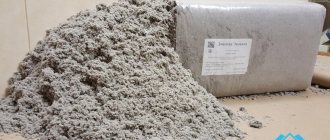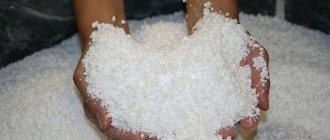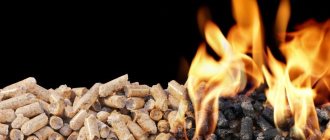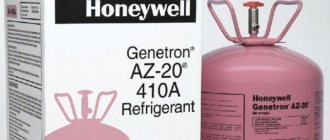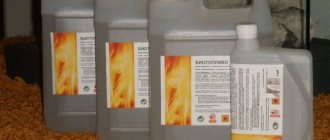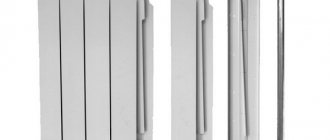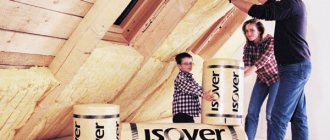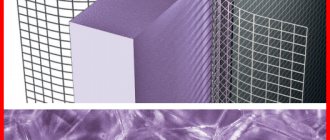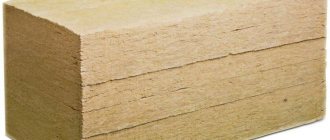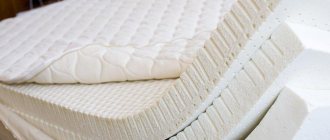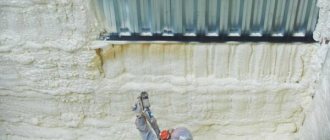Polyethylene foam is a group of elastic elastic materials with a closed porous structure, belonging to the class of gas-filled porous plastics.
Unlike most other polymers that have narrow-profile applications, polyethylene foam is universal.
The combination of heat, sound and waterproofing properties combined with high chemical resistance explain its use in the industrial and domestic sectors.
The raw material for polyethylene foam is granulated polyethylene LDPE and HDPE, including recycled polyethylene obtained by processing film and other waste.
Production stages
The polyethylene foam production line consists of:
- extruder;
- compressor for gas supply;
- cooling lines;
- packaging.
Depending on the type of final product, the equipment may be called bag-making, pipe-stitching, etc.
Additionally, flying shears and punching presses of various designs and molding machines are used.
A granule of LDPE, HDPE or compositions based on them is loaded into the receiving hopper.
Trimmings, the main type of polyethylene foam production waste, are returned to the production cycle after minimal processing.
Many enterprises mix primary raw materials with regranulate .
The main requirements for secondary raw materials for the production of foamed polyethylene are the absence of mechanical impurities, the same type in color and average molecular weight as primary PE.
If the requirements are met, the quality, operational and mechanical properties of the finished product do not suffer.
Main brands
Foamed polyethylene has been produced since the last century. Until 2000, this material could only be purchased in Russia from foreign brands. The most common were Turkish Odeflex and German Tubolit.
Now polyethylene foam is produced in Russia in large quantities, and also continues to be imported from abroad. The most well-known brands are ISOLON, Vilaterm, POLIFOM, Energoflex, Penofol, PORILEX, and others are added to them every year.
Physicochemical characteristics
Here are the main properties of the material :
- The lower limit of operating temperatures is -80 °C. When going beyond it, the material loses its elasticity and becomes brittle.
- Melting point is about 110 °C. Some manufacturers offer compositions with an upper limit of 140 °C.
- Water absorption (with direct contact) does not exceed 1.2%.
- The tensile strength is 0.015 - 0.5 MPa.
- The material is resistant to most aggressive compounds, including petroleum products, and biologically active environments.
- Service life reaches 100 years.
Data on thermal conductivity in comparison with other types of gas-filled polymers are given in the table:
| Material | Density, kg/m3 | Thermal conductivity, W/m ° K |
| Polyethylene foam | 20 – 400 | 0, 029 – 0,05 |
| Polypropylene foam | 20 – 200 | 0, 034 |
| Polyurethane foam | 60 – 600 | 0,02 – 0,04 |
| Foam rubber | 12 – 60 | 0,03 – 0,06 |
| Expanded polystyrene | 15 – 150 | 0,027 – 0,042 |
| Polyvinyl chloride foam | 15 – 700 | 0,035 – 0,045 |
Data taken from manufacturers' advertising offers.
Advantages and disadvantages
About the advantages of the material:
- Like all foamed polymers, PPE has a low thermal conductivity coefficient - 0.035 W/(m deg).
- The material has good shock-absorbing properties. Foamed polyethylene is used to make: packaging (density 25-33 kg/m3), flooring (density 300 kg/m3), gaskets for equipment (300-500 kg/m3).
- Foamed polyethylene has dielectric properties, so self-extinguishing PPE is used to make electrical insulation for high-frequency cables. The dielectric constant of PPE is in the range of 1.4...1.5 (water - 81, vacuum - 1).
- PPE is an inert material that does not enter into chemical reactions.
- It is also a lightweight and waterproof material; insects and mice do not eat it. And most importantly, it is inexpensive.
It also has disadvantages:
- Foil-coated PPE will work as thermal insulation only if there is at least 2-3 cm of air space in front of the foil layer.
- Above 100 0C, the material begins to melt and then burn. It can only be used in rooms with a high specific fire load.
Classification
Polyethylene-based foams are classified according to the following criteria :
- type of feedstock;
- foaming method;
- stitching method.
For the manufacture of PPE, PVD and HDPE granules are used, as well as various compositions based on them. The molecular structure of any type of polyethylene makes it possible to obtain materials with predictable properties.
In the production of polyethylene foam,
two methods are used to create a gaseous phase :
- Physical. This is the direct injection of gas (butane or other light saturated hydrocarbons) into the molten feedstock - the cheapest foaming method. However, it requires the use of specialized equipment and compliance with increased fire safety precautions.
- Chemical. Reagents are introduced into the feedstock, which decompose and release gases. Chemical foaming can be performed on standard foundry and extrusion equipment. The composition of the additives is determined by the requirements for density and cell size.
Modern production technologies make it possible to obtain various molecular structures of gas-filled polyethylene:
- Unstitched (NPE). It is obtained using physical foaming technology. At the same time, polyethylene retains the original structure specified during synthesis. NPE is distinguished by relatively low strength characteristics and its use is justified under conditions of minor mechanical loads.
- Chemically cross-linked (CS-PPE). The technology includes the following stages: mixing raw materials with foaming and cross-linking reagents, forming an initial matrix blank, stepwise heating in a furnace. Heat treatment leads to the formation of cross-links between the polymer threads (crosslinking occurs), and then gas formation occurs. Products made from CS-PPE have a fine-porous structure, a matte surface and higher mechanical properties compared to products made from NPE: strength, tear resistance, elasticity, i.e. the ability to return to its original thickness after compression.
- Physically cross-linked (FS-PPE). The material does not contain crosslinking additives, and instead of the first stage of heat treatment, the matrix blank is treated with an electron flow, which initiates the crosslinking process. The ability to control the number of cross-links allows you to vary the characteristics of the material and cell sizes.
Unlike most structural materials, polyethylene foam is marked not by strength indicators, but by average density, i.e. the ratio of weight per unit volume (kg/m3): 15, 25, 35, 50, 75, 100, ... 500, as for example shown in the photo above.
The method for determining average density is described in GOST 409 - 2017.
Thanks to the work of marketers, domestic consumers are more familiar with the brands of polyethylene foams used, in particular, for pipe thermal insulation:
- Izolon;
- Teploflex;
- Penolon;
- Tatfoum;
- Hitfom;
- Stage, etc.
Product production is most often regulated by internal enterprise standards and technical specifications. However, in Russia, GOST R 56729-2015, corresponding to EN 14313:2009, has been developed for the production of thermal insulation materials.
Types of polyethylene
At the moment, the industry produces a large number of grades of polyethylene, differing in production method and properties:
- High pressure PE – LDPE;
- Medium pressure PE - PSD;
- Low pressure PE – HDPE;
- LLDPE is linear high pressure, resistant to ultraviolet radiation and aggressive substances, but less durable, so it is connected in layers.
- Low-pressure LDPE has similar characteristics, but the material itself is durable, resistant to shock loads and compression. Similar technologies are used to produce household containers that can withstand low and medium pressure.
Linear grades of PE practically do not decompose in the environment, so packaging products must be specially disposed of so as not to harm the environment.
In addition to the types described above, there are special materials that are used in construction. This is cross-linked and non-cross-linked polyethylene.
Stitched
“Crosslinking” significantly changes the properties of the material.
Crosslinking is a technology that increases the strength characteristics of polyethylene, the formula of which is CH2. During a chemical reaction, molecules form a three-dimensional cellular network, since hydrogen leaves them and carbon connects with each other. There is a concept - the degree of cross-linking. This is the ratio of “cross-linked” molecules and their total number.
There are three ways to sew PE:
- Physical. During the crosslinking process, the starting material is exposed to x-rays. The method is unreliable, since the products have an uneven degree of cross-linking due to poor penetration of rays throughout the entire thickness. Also, PEX-C brand products are not able to return to their previous shape when deformed. At low temperatures, products crack.
- Chemical, which is performed using nitrogen (PEX-D brand) and silane (PEX-B) radicals. The method also did not become widespread due to the imperfection of the products. The degree of crosslinking is 65%, which is very low.
- Peroxide method (PEX-A). Hydrogen peroxide is used at high temperatures. Allows you to obtain the highest possible degree of cross-linking - 85%.
Products obtained by peroxide melting are more expensive, but can withstand heating up to 120 degrees. The elongation rate also increases, cross-linked polyethylene pipes become more flexible and have shape memory.
Ultra high molecular weight PE
Ultra-high molecular weight PE has high frost resistance and impact resistance.
A material with exceptional properties, used in extreme conditions:
- high frost resistance;
- corrosion resistance;
- resistance to abrasive effects;
- low friction coefficient;
- impact resistance;
- inertness to chemicals.
Ultra-high molecular weight PE is used for the manufacture of armor-protective products, parts for mining and processing equipment, filters, and pads for sports equipment. The base is high-strength threads obtained at low pressure.
Chlorosulfonated polyethylene (CPS)
Additions of sulfur dioxide and chlorine make it possible to obtain rubber-like PE, which has increased heat-resistant properties, as well as resistance to external environmental influences. Used:
- for the production of adhesives and sealants;
- for the production of wear-resistant floor coverings;
- in the production of paints for concrete and metal.
The material is able to dissolve in acetic acid and chlorinated hydrocarbons.
Application of polyethylene foam
Below we will describe the main areas of application.
Soundproofing
Like all cellular materials, polyethylene foam absorbs airborne noise well . A sound wave passing through a PPE layer loses a significant part of its kinetic energy due to its conversion into heat.
NPE is a good barrier to impact noise and vibration. Of all acoustic materials, it has the highest characteristics for absorbing low-frequency vibrations.
Cross-linked polyethylene foam is also used for sound insulation in residential and industrial construction, automotive and mechanical engineering.
PPE tape laid on the ceiling and walls when installing a floating screed is considered to be an effective blocker for the occurrence of structural noise.
Thermal insulation
Low thermal conductivity and vapor permeability have made foamed polyethylene one of the most popular materials in construction.
Sheet and roll polyethylene foam is used mainly indoors as part of a heat-insulating pie of facade walls, roofing, ventilation and air conditioning systems for insulating a house.
PPE for thermal insulation is covered with foil, which is an additional barrier to heat and a mirror that reflects infrared radiation .
One of the areas of application of foamed polyethylene is insulation for pipes of heating mains, cold and hot water.
Sealing and packaging
In addition to pipe thermal insulation and insulation, PPE is used to produce packaging materials for transporting fragile objects and painted structures. Vacuum forming and die-cutting machines are used to create packaging for mass-produced products that also serves as a sealant, for example, for mobile phones, electronic and electrical appliances.
Features of choice
When choosing polyethylene foam, take into account the individual characteristics of various types of polyethylene foam and the features of its application:
- When insulating structures from the inside, the minimum thickness is of great importance, which does not take away the space of the premises.
Figure 15. Insulation of ceilings and walls with polyethylene foam from the inside.
- To insulate the floor, it is better to use cross-linked polyethylene foam in the form of expansion mats, which can withstand loads without loss of insulating qualities and deformations.
- When insulating with foil polyethylene foam, the metallized layer should be directed towards the flow of heat and light: when insulating facades - outwards, when insulating internal walls and ceilings - inwards.
- PPE sheets and fabrics must be attached end-to-end, without gaps or tears. For reliability, the joints must be taped with metallized tape.
- To prevent the formation of condensation on the surface of foamed polyethylene, it is necessary to create a layer about two centimeters thick between the insulation and the finishing panels.
Important! The main feature of foamed polyethylene is its high thermal insulation properties. PPE insulation with a thickness of 10 millimeters corresponds in thermal insulation qualities to 150 millimeters of brickwork, or 50 millimeters of mineral wool.
Recycling
To dispose of polyethylene foam waste, the same technologies are used as for non-foamed polyethylene foam - thermomechanical and thermochemical recycling , or pyrolysis.
Used PPE packaging is processed into a secondary granule, and cross-linked PPE crumbs serve as a filler for composite materials from which paving slabs and other artificial coatings are made.
The main feature of gas-filled polymers – low density – makes adjustments to the technology. During processing, PPE waste is compressed in specialized machines - thermocompactors.
On the equipment market you can find devices with a compression ratio of up to 90:1. PPE briquetted in compactors can be loaded into an extruder or thermal oven and used as a raw material for the production of polyethylene wax.
What is made from it?
From this material. In addition to its use in construction, industrial production of a number of finished products has been established, the most famous of which are tubes made of foamed polyethylene , that is, ready-made “coats” for pipes of various diameters.
Also, foamed polyethylene pipes are also produced in the form of elastic sheets - they are used when laying highways or any other systems with very large or non-standard pipe diameters.
polyethylene foam bundles are also manufactured , which are used as insulators inside air conditioners, climate control systems and other similar devices.
Polyethylene foam mats are very popular among builders , that is, quite thick, reinforced rectangular slabs consisting of several layers of material.
This product is usually not used for domestic use, but in the professional construction of individual housing, for example, cottage villages or small residential complexes, this product is in great demand.
